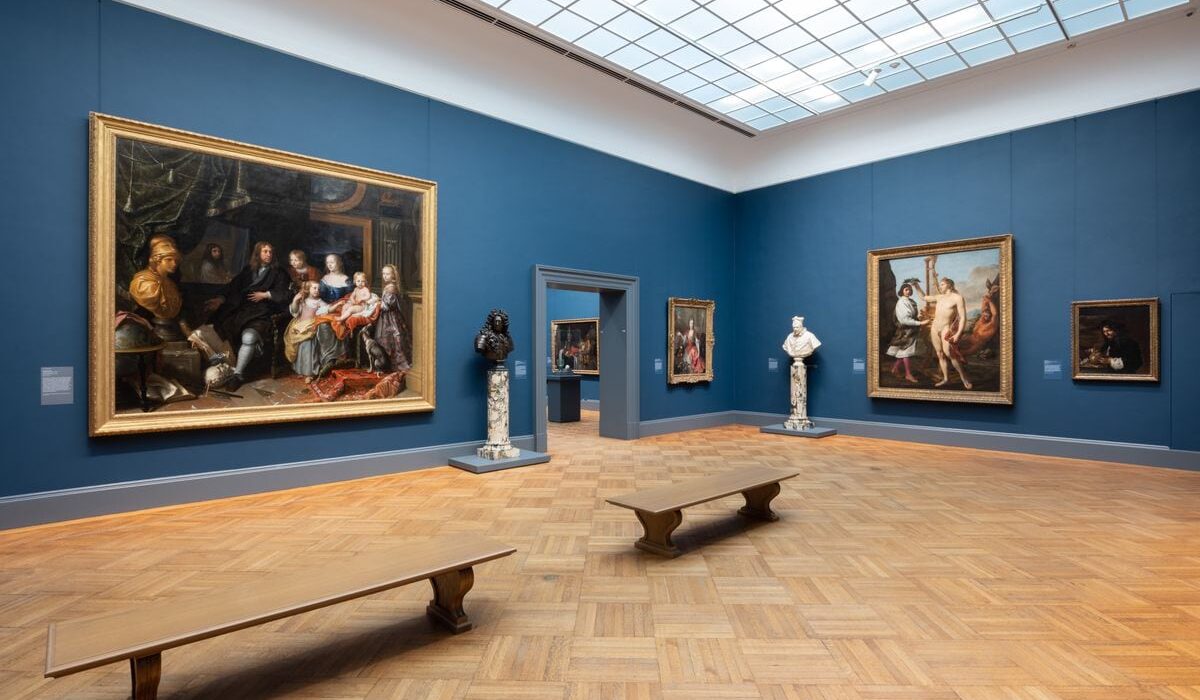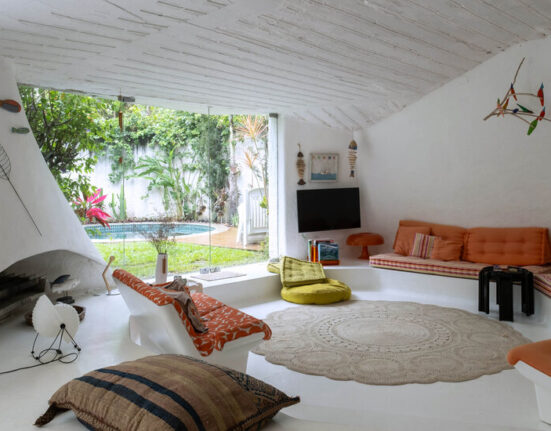This past Monday, the Metropolitan Museum of Art (the Met) in New York City reopened the 45 rooms that make up the European Paintings collection, after the completion of a renovation that began in 2018. This part of the gallery hosts works that were created between 1300 and 1800. It’s now illuminated more naturally, thanks to large skylights.
The renovation — the largest infrastructure project undertaken in the museum’s history — will allow visitors to better appreciate the details of the 679 paintings on display. Many have been restored as part of the comprehensive renovation of the facilities, while a chronological reordering of the works has also taken place (previously, the paintings were grouped according to artist nationality). The colors chosen for the walls — from burgundy to different shades of blue — gives the space an intimate atmosphere, like a reading room or music room.
“I think [the European collection is a] central part of the museum, yes. It’s probably also an area where people think that they’ve already seen it all. So the important thing about this reopening — with more natural light and a magnificent installation — is that it offers new stories, new themes, new approaches that, basically, rejuvenate our idea of what Europe means in the field of painting,” explains Max Hollein, director of the museum.
The renovation — which is also committed to sustainability, thanks to a series of technical improvements — entails a new narrative. For instance, there’s a greater presence of works by women, such as a recently-acquired still life by Clara Peeters — a Flemish still-life painter from Antwerp — or two loaners by Sofonisba Anguissola (Italy) and Judith Leyster (Netherlands). There’s also a dialogue between the ancient and modern, as well as a broader geographical interaction: visitors can see the complex relations of Europe with New Spain and the Viceroyalty of Peru.
The best example of this conceptual rereading is the room dedicated to El Greco, with several Picassos interspersed, creating a juxtaposition. This shows the influence that the Greek painter had on the Spaniard. A room dedicated to viceregal art has also been incorporated (it was brought over from the American wing) to convey a natural projection of creation in Spain. In the adjoining rooms, you can find virgins painted by Francisco de Zurbarán and Bartolomé Esteban Murillo, or the portrait that Velázquez did of his slave and disciple Juan de Pareja. They rub shoulders with colorful images of crowned nuns — such as Portrait of Sor Juana de Nuestra Señora de Guadalupe, acquired in 2021 — and depictions of the Three Wise Men from Mexico and Peru. Some paintings seem halfway between Seville and Latin America, according to curator José Luis Lazarte. One example of this is the beautiful Saint Michael the Archangel by Ignacio de Ries, a disciple of Zurbarán. “There’s a link with [Latin America], because of the very American colors,” explains Lazarte, an expert in paintings conservation.
The interconnection of cultures, materials and colors offers a staging that is both solemn and modern, breathing new life into a collection that includes another 112 works, including sculptures, decorative art, furniture and even a selection of ancient musical instruments. In this effort to re-energize the collection, a triptych (panel painting) by Francis Bacon draws attention near several Madonnas from the Renaissance era. There’s also a crucifixion by Salvador Dalí in a room that’s dedicated to Spanish religious art from the end of the Middle Ages. These are all “Met winks” at the visitors, emphasizes Stephan Wolohojian, senior curator of the European Paintings collection at the institution.
“The Met has a very important representation of Spanish painting… especially, of course, El Greco (Domḗnikos Theotokópoulos, of the Spanish Renaissance). [The museum has] the most important collection of works by El Greco outside of Spain. And that’s why it’s almost the centerpiece of the new exhibit, in dialogue with Picasso,” Hollein explains. “It offers you the possibility of, on the one hand, appreciating artistic development over time, and also, of course, of seeing the artists’ creation in its entirety. It can be seen how Picasso — especially in his Blue Period — took a close look at El Greco. I think it’s an exciting way to activate the collection, to show the development of painting,” Hollein adds.
Five years of careful work now allow us to explore Europe — the continent as a cultural concept, long before the political notion — thanks to an organic collection, which adapts, transforms and, above all, grows. “We’ve made several important acquisitions, and that’s also a sign that this is a living collection. We received donations and an important painting by [Italian Renaissance painter Francesco] Salviati. We’ve also been able to acquire very important works by female artists from the Dutch Golden Age (such as the painting by Peeters). This shows that the Met collection isn’t closed, especially in the area of European paintings. Even though [the level of work] is so high, we still have opportunities to enrich the collection.”
In fact, the collection has never stopped growing since it was created in 1871, when the institution acquired 174 paintings from three private sources in Europe. Since then, it’s been enriched by numerous donations, legacies and purchases, making it one of the most complete collections of European paintings in the world.
Starting from the original location in 1880, the galleries were modernized and refurbished between 1951 and 1954, to accommodate new collections. In the 1970s, another adjustment was undertaken, with partial renovations following in 1987 and 2013. The space that opens its doors today is thanks to the contributions of numerous philanthropists, but also thanks to the economic support of both the municipal and state governments.
Like everything at the Met, quality means quantity. To renovate the 45 rooms, the museum had to clear nearly 130,000 square feet (more than twice the size of the White House) so as to be able to replace 1,400 skylights, some of which were installed in the 1930s. Walls were painted and moldings were restored, while some door frames were shifted to improve visibility of the rooms’ new vanishing points, which provide depth. Finally, new heating and air-conditioning systems were installed. The five years and $150 million budget were “a wait that has been well worth it,” according to Wolohojian. During the renovation — and until the end of this past March, when the final touches were undertaken — the 45 rooms were never all closed at the same time. Some were always kept open to the public, as the work was carried out in phases.
The Met has placed great importance on the efficiency and sustainability of the project. The three wings of the building that house the 45 rooms (the equivalent of an entire block, which, in New York City, isn’t exactly small) were the ones that previously consumed the most energy in the museum. But with the new lighting, heating and cooling systems, millions of dollars in savings are expected for the city, which pays the museum’s utility bills. The skylights alone will reduce the Met’s overall carbon footprint by 7% annually, while minimizing the condensation-related risks posed by the old skylights.
In phases, as the masonry and painting work were carried out, the team in charge of the renovation moved the paintings to temporary locations in other parts of the museum, while some were loaned out to other institutions. With one exception: three gigantic canvases by the Venetian artist Giovanni Battista Tiepolo weren’t moved from their place, due to their size (one of them measures 10 feet by 10 feet). The house painters carried out their work with reverential zeal, painting around the frames. The three occupy the majestic entrance to the gallery, at the end of the stairs of the museum’s central lobby. This is the big door that leads from New York to Europe.
Sign up for our weekly newsletter to get more English-language news coverage from EL PAÍS USA Edition







